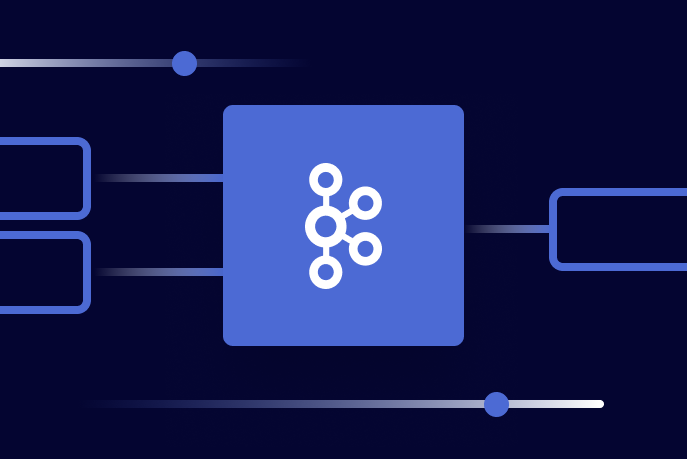[Webinar] How to Implement Data Contracts: A Shift Left to First-Class Data Products | Register Now
Apache Kafka
Data Products, Data Contracts, and Change Data Capture
Change data capture is a popular method to connect database tables to data streams, but it comes with drawbacks. The next evolution of the CDC pattern, first-class data products, provide resilient pipelines that support both real-time and batch processing while isolating upstream systems...
Unlock Cost Savings with Freight Clusters–Now in General Availability
Confluent Cloud Freight clusters are now Generally Available on AWS. In this blog, learn how Freight clusters can save you up to 90% at GBps+ scale.
Contributing to Apache Kafka®: How to Write a KIP
Learn how to contribute to open source Apache Kafka by writing Kafka Improvement Proposals (KIPs) that solve problems and add features! Read on for real examples.
Preparing the Consumer Fetch: Kafka Producer and Consumer Internals, Part 3
In this third installment of a blog series examining Kafka Producer and Consumer Internals, we switch our attention to Kafka consumer clients, examining how consumers interact with brokers, coordinate their partitions, and send requests to read data from Kafka topics.
Handling the Producer Request: Kafka Producer and Consumer Internals, Part 2
In this post, the second in the Kafka Producer and Consumer Internals Series, we follow our brave hero—a well-formed produce request—which is on its way to be processed by the broker and have its data stored on the cluster.
How Producers Work: Kafka Producer and Consumer Internals, Part 1
The beauty of Kafka as a technology is that it can do a lot with little effort on your part. In effect, it’s a black box. But what if you need to see into the black box to debug something? This post shows what the producer does behind the scenes to help prepare your raw event data for the broker.
Introducing Apache Kafka® 3.8
We are proud to announce the release of Apache Kafka 3.8.0. This release contains many new features and improvements. This blog post highlights some of the more prominent features. For a full list of changes, be sure to check the release notes.
Building a Full-Stack Application With Kafka and Node.js
A well-known debate: tabs or spaces? Let’s settle the debate, Kafka-style. We’ll use the new confluent-kafka-javascript client to build an app that produces the current state of the vote counts to a Kafka topic and consumes from that same topic to surface them to a JavaScript frontend.
Running Apache Kafka® at the Edge Requires Confluent’s Enterprise-Grade Data Streaming Platform
Deploying Apache Kafka at the edge brings significant challenges related to scalability, remote monitoring, and high management costs. Confluent’s enterprise-grade data streaming platform addresses these issues by providing comprehensive features that enhance Kafka’s capabilities, ensuring effici...
Solving the Dual-Write Problem: Effective Strategies for Atomic Updates Across Systems
The post discusses the Dual-Write Problem in distributed systems, where atomic updates across multiple systems like databases and messaging systems (e.g., Apache Kafka) are challenging, leading to potential inconsistencies. It outlines common anti-patterns that fail to address the issue...
Serverless Decoded: Reinventing Kafka Scaling with Elastic CKUs
Apache Kafka® has become the de facto standard for data streaming, used by organizations everywhere to anchor event-driven architectures and power mission-critical real-time applications.
Contributing to Apache Kafka®: How to Write a KIP
Learn how to contribute to open source Apache Kafka by writing Kafka Improvement Proposals (KIPs) that solve problems and add features! Read on for real examples.
How to Create a docker-compose.yml File With Kafka Docker Composer
Learn how to create a docker-compose.yml file for Kafka using Kafka Docker Composer. Set up clusters, perform failover testing, and more with this guide.
How to Process GitHub Data with Kafka Streams
Learn how to track events in a large codebase, GitHub in this example, using Apache Kafka and Kafka Streams.
Introducing Apache Kafka 3.7
Apache Kafka 3.7 introduces updates to the Consumer rebalance protocol, an official Apache Kafka Docker image, JBOD support in Kraft-based clusters, and more!
Enterprise Apache Kafka Cluster Strategies: Insights and Best Practices
As companies increase their use of real-time data, we have seen the proliferation of Kafka clusters within many enterprises. Often, siloed application and infrastructure teams set up and manage new clusters to solve new use cases as they arise. In many large, complex enterprises, this organic growth
A Deep Dive Into Sending With librdkafka
Learn how to interact with the librdkafka library when sending and how to handle errors correctly. Take a deepdive into the internal mechanics of the library.










